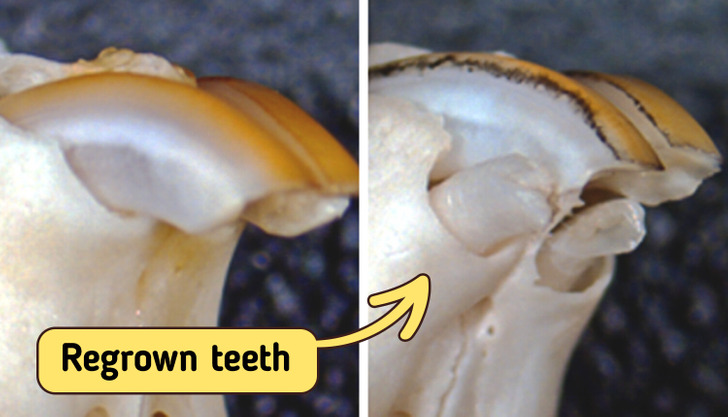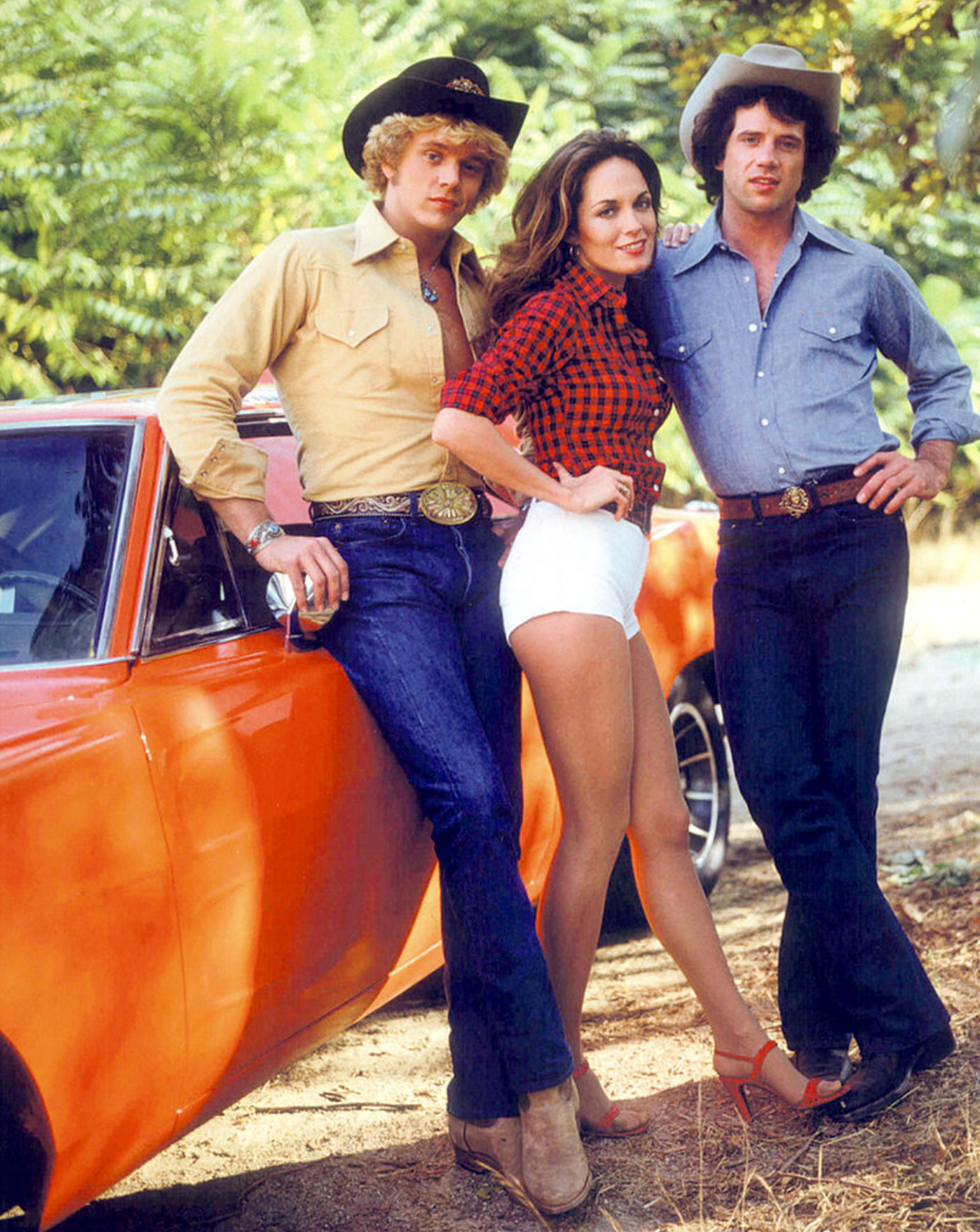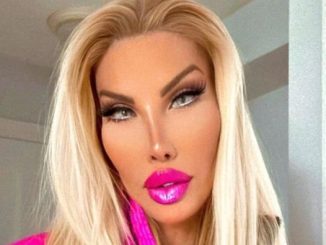The tooth fairy is a welcome guest for any child who has lost a tooth. Not only will the fairy leave a small gift under the child’s pillow, but they be assured of a replacement tooth in a few months. Unfortunately, the scenario is quite different for adults grappling with a loss of teeth. Luckily, there may be some hope thanks to a new study performed by scientists at Kyoto University and the University of Fukui.
A dental breakthrough
While the typical adult mouth houses 32 teeth, approximately 1% of the population exhibits variations of them, either possessing more or fewer teeth due to congenital conditions. Researchers have delved into the genetic factors behind cases of excessive teeth, seeking valuable insights into the potential regeneration of teeth in adults. This study is the first to show that monoclonal antibodies can help regrow teeth. It suggests a new way to treat a dental problem that currently requires implants and other artificial solutions.
A bit of science
The research team disclosed that an antibody targeting a specific gene, known as uterine sensitization-associated gene-1 (USAG-1), can induce tooth development in mice affected by tooth agenesis, a congenital condition. The findings were published in the journal, Science Advances.
As per Katsu Takahashi, a senior lecturer at the Kyoto University Graduate School of Medicine and one of the principal contributors to the study, the essential molecules crucial for the development of teeth have already been pinpointed. “The morphogenesis of individual teeth depends on the interactions of several molecules including BMP, or bone morphogenetic protein, and Wnt signaling,” says Takahashi.

On April 13, 2021, the University of Kyoto posted its first pic of newly-grown teeth in mice.
BMP and Wnt are involved in more than just tooth development; they affect the growth of organs and tissues early in the body’s development. Because drugs affecting them directly might have broad side effects, scientists are cautious. To find a potentially safer method, researchers focused on the gene USAG-1, thinking that aiming at factors countering BMP and Wnt specifically in tooth development could be more precise.
“We knew that suppressing USAG-1 benefits tooth growth. What we did not know was whether it would be enough,” added Takahashi.
The first results
Scientists looked at how different monoclonal antibodies affect USAG-1. Monoclonal antibodies are often used to treat things like cancer and arthritis and for making vaccines. Tests with this antibody showed that BMP signaling is crucial for deciding the number of teeth in mice. Also, just one treatment was enough to grow a whole tooth. Further tests confirmed these positive results in ferrets too.
“Ferrets are diphyodont animals with similar dental patterns to humans. Our next plan is to test the antibodies on other animals, such as pigs and dogs,” explained Takahashi.

Fully regrown frontal teeth in ferrets
The next steps

Now, scientists are going to test the drug on healthy adults. If that goes well, the team plans to try it on kids aged 2 to 6 with a rare tooth problem called anodontia, a genetic disorder defined as the absence of all teeth. These kids will get one shot of the drug to see if it makes their teeth grow. If everything works out, the medicine might be approved by 2030.
Takahashi sees the new medicine as an additional choice for individuals who are missing some or all of their teeth.
“The idea of growing new teeth is every dentist’s dream,” Takahashi told the Japanese newspaper, The Mainichi in June this year. “I’ve been working on this since I was a graduate student. I was confident I’d be able to make it happen.”
So hopefully, by the year 2030, humans will get a chance to have their third generation of teeth grown and say goodbye to implants. Until then, make sure to keep your teeth strong and healthy — this article will help you with that.
Preview photo credit KyotoU_News / Twitter
“The stunning ‘Daisy Duke’ looks completely different now – her famous legs were once insured for a million dollars.”
Back in 1979, my Friday nights were spent glued to CBS, eagerly waiting for The Dukes of Hazzard to come on.
As a young boy, I was infatuated with ‘Daisy Duke.’ Honestly, every guy who grew up in the late ’70s probably had a crush on her. The gorgeous brunette was played by the effortlessly stunning Catherine Bach.
Now at 70, Catherine looks quite different, but you can’t help but smile when you see her recent photos…
How many TV characters leave such a lasting fashion legacy? Catherine Bach, forever known as Daisy Duke, cemented her place in pop culture history.

The beautiful actress, who famously had her legs insured, rose to fame in the late ’70s and ’80s. A native of Cleveland, Ohio, she became iconic for her bold wardrobe choices—being one of the first to rock short shorts on TV.
But those who think Catherine was just another pretty face couldn’t be more mistaken.
She had the creativity, confidence, and smarts to shape the character that defined her career.
For instance, the producers of Dukes of Hazzard wanted her to wear a tight white turtleneck, go-go boots, and a poodle skirt for the role. But Catherine took matters into her own hands, designing her own wardrobe. She even handmade many of the outfits, including her signature look.
Today, cut-off denim shorts are still known as “Daisy Dukes,” and it’s amazing that girls continue to wear them, sometimes not even realizing the name’s connection to the show.
A Dolly Parton Look-alike
Catherine Bach was born in Warren, Ohio, in 1954. She had a unique upbringing, splitting her time between her father’s ranch in South Dakota and summers with her mother in California after her parents’ divorce.
While spending time in California, Catherine attended drama school and fell in love with acting. Just two days after finishing high school, she hopped on a plane to Hollywood, determined to make it.

She went through a list of agents in town, visiting every one until she found someone willing to take her on as a client.
The aspiring actress, determined to break into movies, landed a few small roles before learning about an audition for a show called The Dukes of Hazzard. It was her then-husband, David Shaw (Angela Lansbury’s stepson), who brought the opportunity to her attention.
“My husband was a contractor… and he liked to hire struggling actors, writers, and producers. One of them was painting our house while writing a show about an old moonshiner called The Dukes of Hazzard,” Catherine revealed to Beaver County Times in 1981.
Catherine recalled that the producers were originally looking for someone resembling Dolly Parton to play Daisy Duke, envisioning a woman with big blonde hair, a curvy figure, and an hourglass shape. Despite not fitting the description, Catherine auditioned and impressed everyone, landing the role the same night.
The Dukes of Hazzard quickly became a massive success, ranking as one of the top TV shows of the late ’70s. While critics weren’t fans, the general public loved it. The show had everything—car chases, cheesy jokes, and a stunning lead actress.
Catherine Bach’s portrayal of Daisy Duke turned her into a household name. Many fans tuned in just to see her, and her character was adored by viewers.

“Daisy is a mix of many people I’ve known. She’s part of the wildest girl I knew in high school, part of a few close friends I had in Georgia, and there’s a lot of Dolly Parton in her too. She’s also a lot like me when I was a waitress—independent, tough, and able to do anything the guys could do,” Catherine explained in 1979.
In the late ’70s, Catherine represented natural beauty. She had no cosmetic enhancements—no implants, Botox, or veneers.
Within the show, she played the sweet, slightly naive southern belle with strong morals, but it was her good looks and charm that captivated viewers.She wasn’t covered in tattoos, didn’t have unusual piercings or dyed hair—she was simply a down-to-earth, naturally beautiful woman.
Famously, her legs were insured for $1,000,000, adding yet another layer to her star appeal.
Husband’s Tragic Death
After The Dukes of Hazzard ended in 1985, Catherine struggled to maintain the same level of stardom. She appeared in a few low-budget films, and her career slowed down.
However, she later gained recognition for her role as Margo Dutton in the popular Canadian series African Skies. Some fans might also remember her recurring role as Anita Lawson in The Young and the Restless.

Unfortunately, tragedy struck in 2010 when her husband, entertainment lawyer Peter Lopez, passed away. The couple had married in 1990 and remained together until his untimely death.
“He was the love of my life,” Catherine shared with People magazine.
Catherine’s husband tragically took his own life, leaving her with countless questions and few answers. He wasn’t struggling with addiction, rarely drank, and they enjoyed a stable financial life together.
So what led him to this decision?
“There’s a lot of stress in the music industry, but Peter was always composed and collected,” she shared with People.
“The more time that passes, the more I feel he did this to protect us. Something must have happened that he couldn’t move past.”
Confronted with profound loss and overwhelming grief, Catherine dedicated herself to her family. She paused her career to support her daughters, Laura Esmerelda and Sophia Isabella, who were only 11 and 14 at the time.
Catherine couldn’t afford to fall apart; she did everything she could to hold their family together as their home was “swarmed with reporters, the coroner’s office, and various people.”
“I realize these girls are my legacy, and Peter’s legacy. They represent our love and our values about family. I couldn’t allow myself to focus on my own feelings,” she expressed to Huffington Post.
Ultimately, the actress found strength through her faith.
“I prayed a lot. I attended church frequently. I’m Catholic and maintained a close relationship with my priest, whom I deeply trust… That’s what kept me going.”
Catherine Bach Today

In 2024, it will mark 40 years since The Dukes of Hazzard concluded, and Catherine, of course, looks quite different from that young star of years past. Yet one thing remains unchanged: her radiant smile! Catherine has aged beautifully and is still a lovely woman.
During her time as Daisy Duke, she stayed fit by “dancing three hours a day, hiking, and swimming.” Her athleticism not only aided her in the role but also helped her fit into those notoriously tiny shorts.
“The hardest part of wearing the shorts was keeping them zipped,” she once admitted.
However, things have changed a bit over the years. Like many of us, she has experienced fluctuations in weight as she ages.
“I’ve gained a little weight, but who cares?” she told People.
In 2022, the actress was spotted in public for the first time in a while, enjoying some retail therapy in Los Angeles. The stunning star of the 1970s traded her tiny shorts for large sunglasses, black sneakers, and a cross-body phone case.
Many fans noted that the years have changed her and struggled to recognize the former star—but that’s quite normal.
While people age, their character and personality can often shine even brighter. Catherine has always been, and continues to be, a true sweetheart.



Leave a Reply